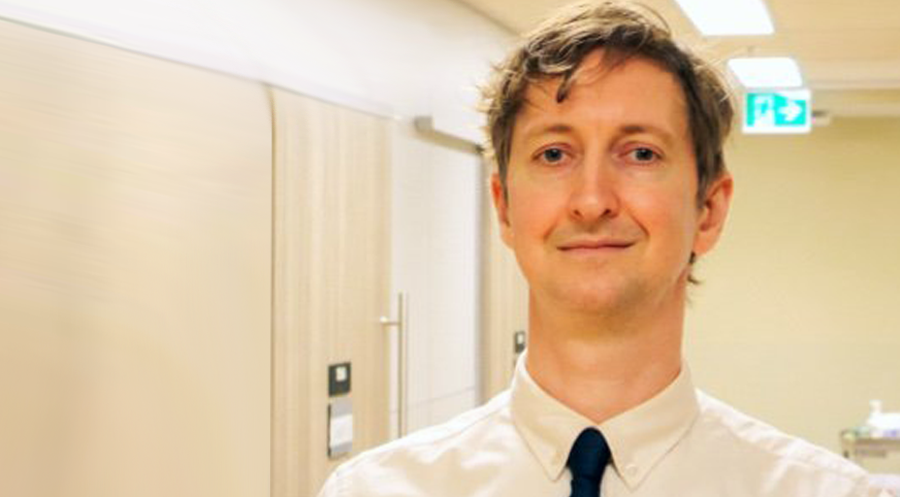CANet funding lays foundation for pioneering treatment for atrial fibrillation
Critical research funded by CANet is the foundational basis of a breakthrough treatment for atrial fibrillation (AF).
CANet investigator Dr. Jason Andrade, including researchers across the country, found that freezing and removing faulty heart tissues, a procedure known as cryoablation, is more likely to prevent long-term progression AF compared to taking anti-arrhythmic drugs (AADs).
This breakthrough research builds on an initial CANet-funded project which showed that cryoablation was more effective than AADs at reducing the short-term recurrence of AF.
AF is the most common cardiac arrhythmia affecting Canadians. Faulty heart tissues cause rapid, irregular heartbeats and increase the risk for stroke, hospitalizations, and death.
In fact, a significant portion of AF-related healthcare costs are due to hospitalization and acute care.
Current AF-associated costs are estimated at two and a half percent of Canada’s annual healthcare expenditures. These costs are expected to rise to four percent within the next two decades.
Both studies will help reduce the burden of AF in Canada. They fulfil a critical need for minimally invasive cardiac procedures that improve patient outcomes without increasing healthcare costs and treatment time.
Dr. Andrade’s pioneering treatment – catheter ablation with a cryothermy balloon or cryoablation – freezes faulty heart tissues in AF patients while minimizing damage to surrounding areas.
In the initial study, Dr. Andrade teamed up with CANet industry partners Medtronic and Baylis Medical to evaluate the effectiveness of the new technology in lowering the risk for arrhythmia recurrence and stroke.
Over 300 patients across Canada participated in a randomized clinical trial – some underwent cryoablation, and others received AADs. All received an implantable cardiac monitoring device to detect atrial tachyarrhythmia and were intensely monitored for up to a year after treatment.
The CANet-funded project showed that cryoablation as the initial treatment improved both quality of life and symptoms compared to AADs, which often are ineffective and have severe side effects such as heart failure or organ toxicity. Essentially, catheter ablation (a day procedure) reduces the risk of arrhythmia recurrence, improves quality of life, and reduces healthcare utilization more effectively than medications.
This was a “major advancement in the interventional treatment of AF and a significant Canadian accomplishment,” as noted by Dr. Andrade.
Building on the foundational CANet-funded work on the first study, he wanted to explore if cryoablation was effective in preventing AF progression.
AF often begins as small isolated arrhythmias – but each recurring incident builds up to cause electrical and structural changes in the heart leading to longer-lasting events known as persistent AF – such patients are at an increased risk of stroke and heart failure and often have higher rates of hospitalization.
“Atrial fibrillation is like a snowball rolling down a hill. With each atrial fibrillation episode, there are gradual changes to the heart, which causes the heart rhythm problem to get increasingly worse,” Dr. Andrade says.
The second study extended patient monitoring from the initial 1 year to 3 years. Over 36 months of follow-up, patients who had undergone cryoablation right from the start were less likely to get persistent, life-threatening forms of AF and get hospitalized, compared to those being treated with AADs.
“This data provides clear evidence that an early invasive therapy may be a more effective method to improve the lives of our patients with atrial fibrillation,” Dr. Andrade says and recommends pursuing cryoablation as an initial treatment strategy in appropriate patients.
With the help of CANet’s initial funding, Dr. Andrade is helping rethink Canada’s approach to AF treatment.
“With effective early intervention, we can keep people healthy, happy, and out of the hospital, which would be a tremendous benefit for patients and their families, and also our entire health system,” he says.
EARLY-AF Trial — CONCLUSIONS
Among patients receiving initial treatment for symptomatic, paroxysmal atrial fibrillation, there was a significantly lower rate of atrial fibrillation recurrence with catheter cryoballoon ablation than with antiarrhythmic drug therapy, as assessed by continuous cardiac rhythm monitoring. (Funded by the Cardiac Arrhythmia Network of Canada and others; EARLY-AF ClinicalTrials.gov number, NCT02825979. opens in new tab.)
Source: New England Journal of Medicine

